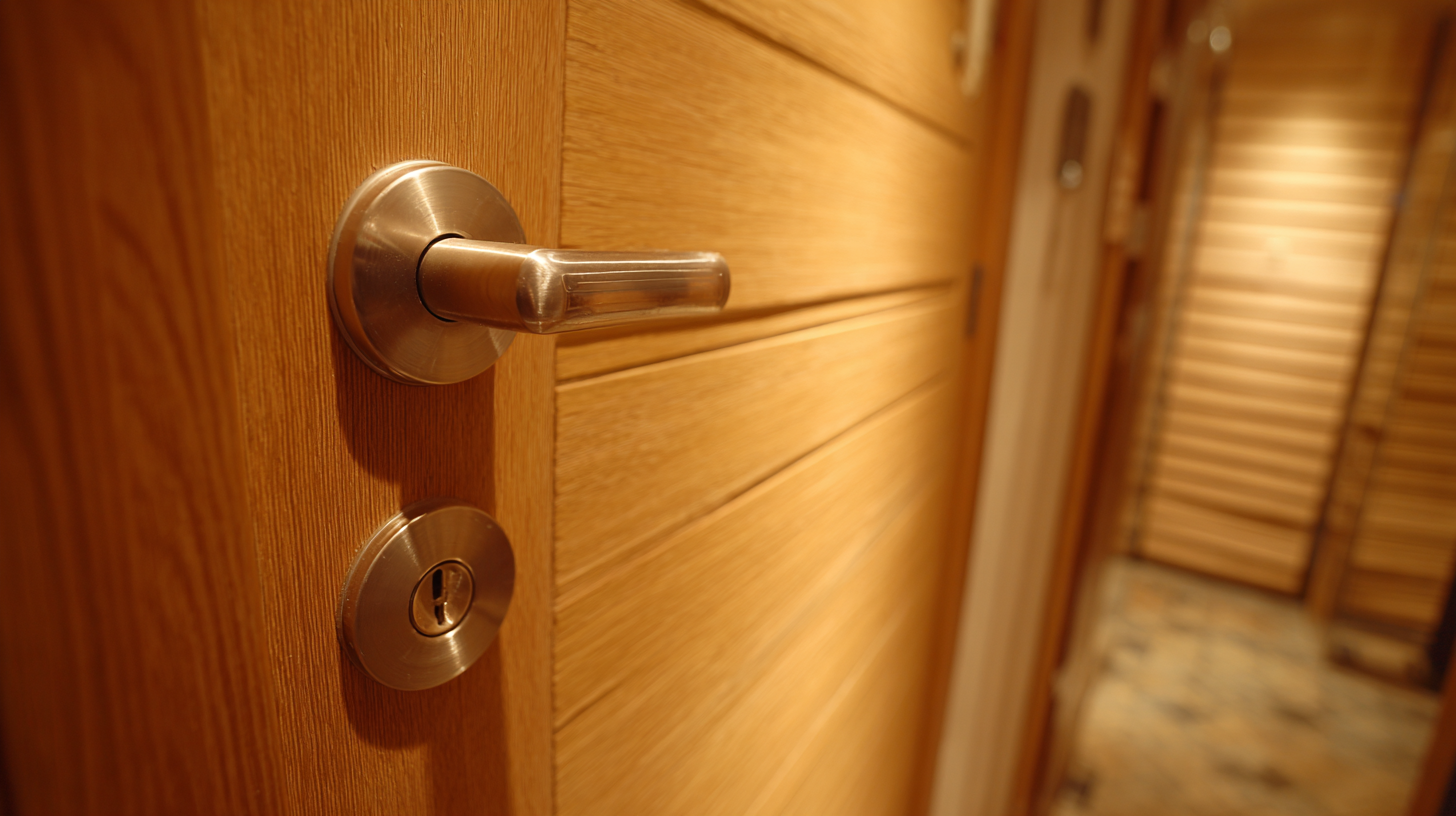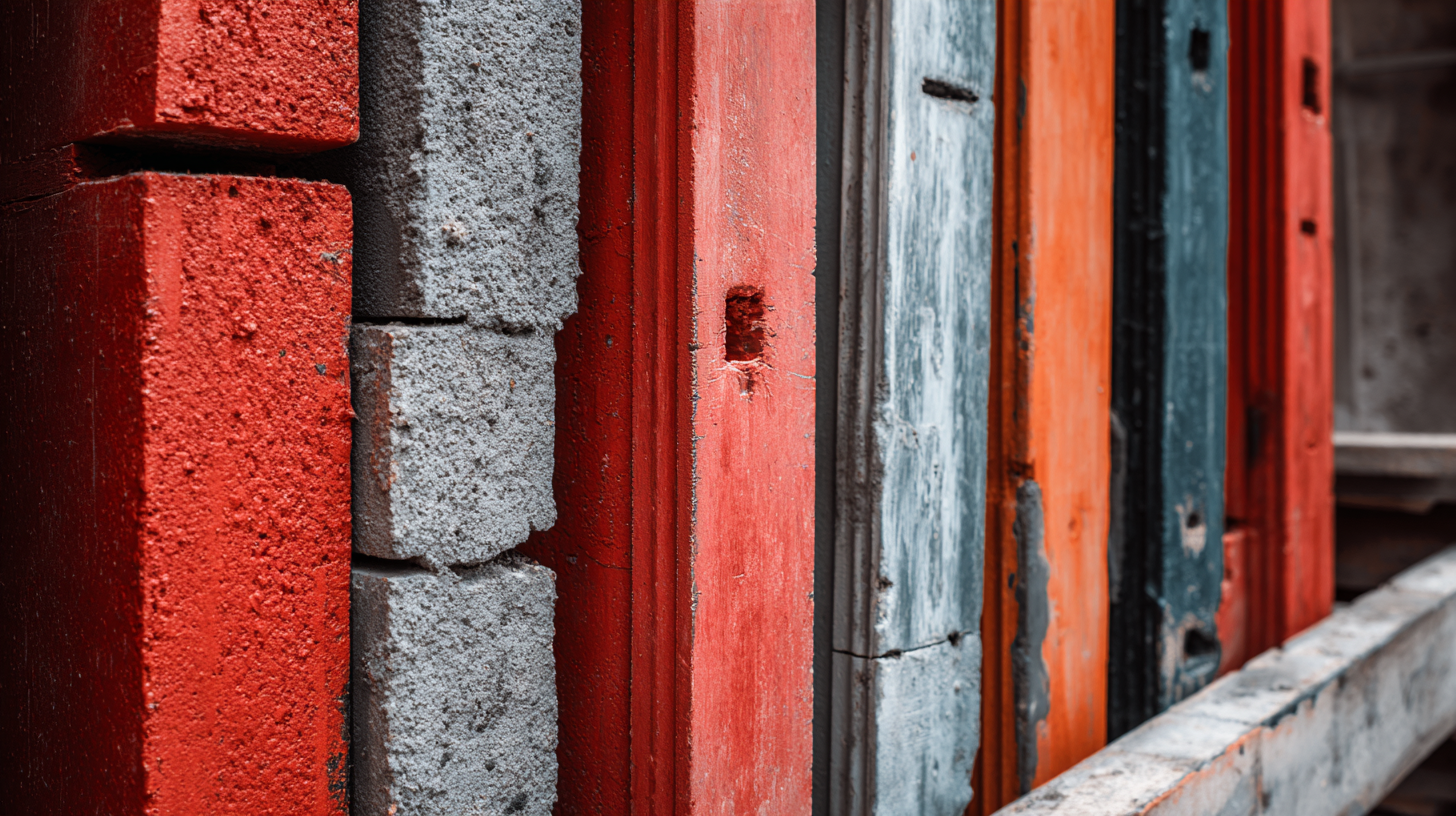Understanding the Challenges with Solid Doors in Modern Construction Standards
In the realm of modern construction,
the inclusion of solid doors has become a focal point of debate among industry professionals.
As building standards evolve, the structural and aesthetic advantages of solid doors
are often weighed against the challenges they present. According to the
National Lumber Manufacturers Association,
solid doors provide superior insulation and soundproofing, boasting an average
STC (Sound Transmission Class)
rating of 25 to 35, making them a preferred choice in residential and
commercial spaces. However, recent reports from the
International Code Council highlight concerns
regarding their weight and the implications this has on door hardware and framing systems,
which may not meet contemporary standards of efficiency and safety.
As the construction industry continues to prioritize sustainable and functional designs,
understanding the complexities surrounding solid doors is vital for architects,
builders, and developers aiming to navigate these evolving construction norms effectively.

Challenges of Solid Door Materials in Modern Construction
The use of solid door materials in modern construction presents unique challenges that builders and architects must navigate. One of the primary concerns revolves around weight and structural requirements. Solid doors, while renowned for their durability and security, significantly increase the weight of door systems, necessitating robust framing and hardware to support them. This can complicate installation, particularly in older buildings that may not meet the stringent requirements needed for such heavy materials.

Another challenge lies in the thermal performance and energy efficiency of solid doors. Many modern construction standards prioritize energy conservation, and while solid doors can excel in offering sound insulation, they may fall short regarding thermal bridging. Manufacturers are increasingly looking toward innovative materials that can provide the necessary strength while also integrating energy-efficient features. Therefore, balancing the benefits of solid doors with the need for compliance to modern construction standards remains a complex issue, driving the industry toward new solutions that harmonize durability, functionality, and sustainability.
Impact of Building Codes on Solid Door Installation
In modern construction, building codes play a pivotal role in determining the specifications and requirements for various materials and installations, including solid doors. These codes are designed to ensure safety, energy efficiency, and accessibility in buildings. However, the stringent regulations can pose challenges for architects and builders when considering the installation of solid doors. For instance, certain codes may require specific fire-resistance ratings that a standard solid door may not meet without additional modifications or treatments, complicating the planning and selection process.
Furthermore, the impact of building codes on solid door installation extends to structural limitations and performance standards. Many codes stipulate that doors must conform to certain thresholds of durability and security, which can influence the choice of materials and design. As a result, builders face the dual challenge of adhering to code while also providing aesthetic appeal and functionality. The increased emphasis on energy efficiency may also require the integration of insulating features into solid doors, necessitating a balance between traditional solid door characteristics and contemporary energy-saving demands. This intersection of regulations and design principles is critical for successful modern construction projects.
Impact of Building Codes on Solid Door Installation
Maintenance Issues with Solid Doors in High-Traffic Areas
In high-traffic areas, solid doors face unique maintenance challenges that often go unnoticed. While their durability makes them a popular choice in commercial and residential settings, the constant opening and closing can lead to wear and tear that requires regular attention. Over time, the hardware can become misaligned, leading to difficult operation and potential damage to both the door and frame. Moreover, the finish on solid doors can suffer from scratches and scuffs, detracting from their aesthetic appeal and necessitating periodic refinishing or staining to maintain their pristine look.
Additionally, the weight of solid doors poses practical concerns. The heavy material can put significant strain on hinges and door frames, particularly in busy environments like offices or retail spaces. This can result in frequent maintenance checks and repairs, which not only incur costs but can also disrupt everyday operations. Consequently, while solid doors offer durability and security, their performance in high-traffic situations poses important considerations for maintenance and long-term planning in modern construction projects.
Understanding the Challenges with Solid Doors in Modern Construction Standards - Maintenance Issues with Solid Doors in High-Traffic Areas
| Dimension |
Description |
Maintenance Issue |
Impact Level |
| Material Quality |
Durability and resistance to wear |
Warping and cracking |
High |
| Installation Method |
Frame alignment and seal integrity |
Poor sealing leading to air leaks |
Medium |
| Traffic Frequency |
The number of passes through the door |
Surface scratches and dents |
High |
| Maintenance Frequency |
Intervals for regular checks and repairs |
Neglect leading to deeper issues |
High |
| Environmental Conditions |
Humidity, temperature, and exposure |
Corrosion and material degradation |
Medium |
Balancing Aesthetics and Functionality in Door Design
In modern construction, the design of solid doors poses unique challenges that require a balance between
aesthetics and
functionality. According to a recent industry report by the
American Institute of Architects, over 70% of architects emphasize the importance of visual appeal in door design,
as it significantly impacts a building's overall aesthetic. Solid doors, often preferred for their
durability and insulation properties, must also align with contemporary design trends that demand sleek lines and varied finishes.
This overwhelming preference underscores the necessity for manufacturers to innovate while maintaining the inherent qualities of solid doors.

Functionality remains a critical aspect as well. A report from the
Door and Access Systems Manufacturers Association highlights that 85% of homeowners prioritize
security and energy efficiency when selecting doors.
Solid doors offer superior resistance to forced entry and improved thermal performance, meeting these key concerns.
However, balancing these functional attributes with attractive design features can be arduous. As builders integrate
smart home technology and eco-friendly materials into their projects,
the challenge intensifies, pushing the boundaries of traditional door design while striving for innovation without compromising security or energy efficiency.
Sustainability Considerations for Solid Doors in Construction
When it comes to modern construction standards, sustainability has become a paramount consideration for architects and builders alike. The use of solid doors often raises questions regarding their environmental impact. While solid doors are known for their aesthetic appeal, the materials and processes involved in their production can pose sustainability challenges. Traditional solid doors are frequently crafted from hardwoods sourced from forests that may not be managed sustainably, contributing to deforestation and habitat loss.

To address these concerns, the construction industry is increasingly exploring alternative materials and manufacturing techniques. Engineered wood doors, for example, utilize less high-quality timber while still providing comparable strength and appearance. Additionally, manufacturers are adopting eco-friendly finishes and adhesives, reducing the emissions associated with volatile organic compounds (VOCs). By embracing sustainable practices, the use of solid doors can align more closely with modern construction standards, allowing builders to create structures that are both aesthetically pleasing and environmentally responsible.